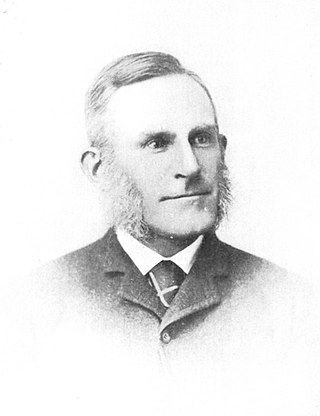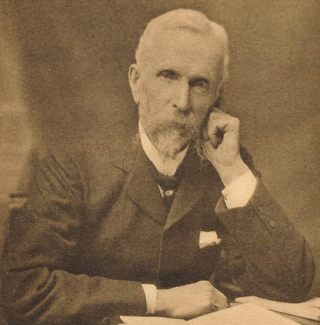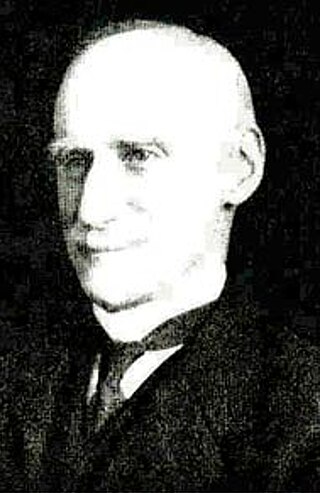
St. George Jackson Mivart was an English biologist. He is famous for starting as an ardent believer in natural selection and later becoming one of its fiercest critics. Mivart attempted to reconcile the theory of evolution as propounded by Charles Darwin with the beliefs of the Catholic Church but was condemned by both Darwin and the Church. His belief in a soul created by God and insistence that evolutionism was not incompatible with the existence of such a God brought him into conflict with other evolutionists, while his theological theories on hell and on the compatibility between science and Catholicism led him to clash with the Church.

Elliott Ladd Coues was an American army surgeon, historian, ornithologist, and author. He led surveys of the Arizona Territory, and later as secretary of the United States Geological and Geographical Survey of the Territories. He founded the American Ornithological Union in 1883, and was editor of its publication, The Auk.

The Royal Birmingham Society of Artists (RBSA) is an art society, based in the Jewellery Quarter in Birmingham, England, where it owns and operates an art gallery, the RBSA Gallery, on Brook Street, just off St Paul's Square. It is both a registered charity, and a registered company.

Samuel Hubbard Scudder was an American entomologist and paleontologist. He was a leading figure in entomology during his lifetime and the founder of insect paleontology in America. In addition to fossil insects, he was an authority on butterflies (Lepidoptera) and grasshoppers (Orthoptera).

William Keith Brooks was an American zoologist, born in Cleveland, Ohio, March 25, 1848. Brooks studied embryological development in invertebrates and founded a marine biological laboratory where he and others studied heredity. His best known book, The Oyster, was first published in 1891 and has been reprinted many times.

John Aitken, FRS, FRSE LLD was a Scottish meteorologist, physicist and marine engineer. He was one of the founders of cloud physics and aerosol science, who built the first apparatus to measure the number of dust and fog particles in the atmosphere, a koniscope.

Charles Johnson Maynard was an American naturalist and ornithologist born in Newton, Massachusetts. He was a collector, a taxidermist, and an expert on the vocal organs of birds. In addition to birds, he also studied mollusks, moss, gravestones and insects. He lived in the house at 459 Crafts Street in Newton, Massachusetts, built in 1897 and included in the National Register of Historic Places in 1996 as the Charles Maynard House. The Charles Johnson Maynard Award is given out by the Newton Conservators, Inc.

George Manville Fenn was a prolific English novelist, journalist, editor and educationalist. Many of his novels were written with young adults in mind. His final book was his biography of a fellow writer for juveniles, George Alfred Henty.

James Eustace Bagnall ALS was an English naturalist with a particular interest in botany, especially bryology. He was the author of the first Flora of Warwickshire (VC38) in 1891. A noted bryologist, he wrote the Handbook of Mosses in the Young Collector Series, various editions of which were published between 1886 and 1910.
Birmingham Natural History Society was a learned society for the study of the natural history of Birmingham, England, and in the surrounding Midlands region, and beyond. It was founded in 1858, and was a registered charity. The Society has had various names, e.g. in the 1870s it was called the Birmingham Natural History and Microscopical Society, and from 1894 to 1963 the Birmingham Natural History and Philosophical Society. It was agreed that the society should be dissolved in 2022, due to lack of volunteer officers to run it.

William Bywater Grove, was an English biologist, in particular a botanist and microbiologist. He is remembered in particular as a mycologist. He died in 1938 on the sixth of January when he was 89.

William Samuel Lilly was an English barrister and man of letters.

William Jerome Harrison FGS, was a British geologist, science writer, and amateur photographer who wrote several textbooks on chemistry, physics, photography, and geology, including the first geological book illustrated with photographs. Born in Hemsworth, Yorkshire, he was educated at Westminster Training College, and afterwards for two years at Cheltenham College. For many years he was curator of the Leicester Town Museum. In 1880 he moved to Birmingham, where he was appointed Chief Science Master under the Birmingham School Board. His books include A History of Photography, The Chemistry of Photography, and Geology of the Counties of England and of North and South Wales. Harrison is also credited with being the founder of the National Photographic Record and Survey Movement which led to the formation of the National Photographic Record Association in 1897.

James William Davis was a British naturalist who specialised in fossil fish. He lived at Chevinedge, Halifax in Yorkshire. James William Davis was a leading member of the Yorkshire Naturalists' Union and a Fellow of the Geological Society of London.















